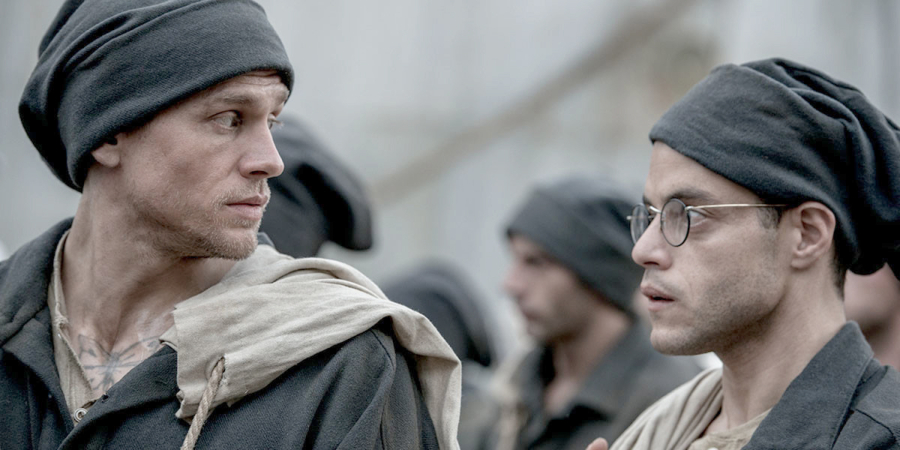The new film version of “Papillon,” based on Henri Charriere’s 1969 best-seller and its 1973 sequel, “Banco,” is rather better than the previous screen adaptation starring Steve McQueen (mouth closed) and Dustin Hoffman (mouth agape). For some that’ll be heresy. For others, it’s a diffident Gallic shrug of a recommendation.
That earlier “Papillon,” a big hit in the year (1973) of “The Sting,” “The Exorcist” and “American Graffiti,” holds a place of respect in the hearts of millions, as do Charriere’s own accounts of wily endurance, before, during and after his time on the penal colony known as Devil’s Island. Tales of unlikely escape from the worst prisons known to humankind exert a peculiar hold on moviegoers. For a couple of grueling hours we trade our own circumstances for someone else’s brutal extremes, and we come away drained as well as inspired — Shawshanked, in other words.
So what is it about this particular story that resists fully satisfying cinematic treatment?
Partly, I think, it’s because you can believe only so much of it. The new “Papillon” directed by Danish documentary and feature filmmaker Michael Noer covers more ground chronologically than the previous one, which is a welcome change. In Aaron Guzikowski’s script we meet the dashing safecracker nicknamed Papillon (Butterfly) breezing through his merry life in the Montmartre section of Paris, 1931. Life is good and Charlie Hunnam, who plays Papillon, enjoys himself to the fullest, in or out of the bed of his lover portrayed by Eve Hewson.
Abruptly Papillon’s arrested and convicted for a murder he didn’t commit, and he is flung into the cesspool of the French penal system shortly afterward. Life imprisonment in French Guiana, on the coast of South America, sends Papillon into a series of rescue attempts. Along with another convict, counterfeiter Louis Dega (Rami Malek, trying as hard as possible not to “do” Dustin Hoffman), Papi eventually finds himself on the notorious Devil’s Island, from which no man has ever escaped.



